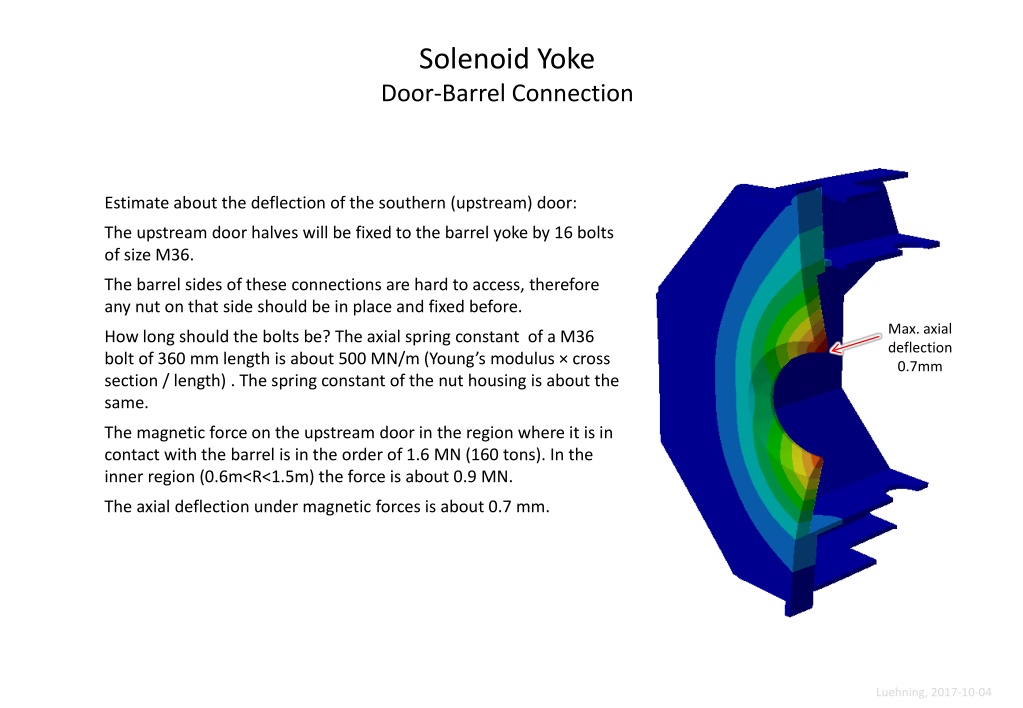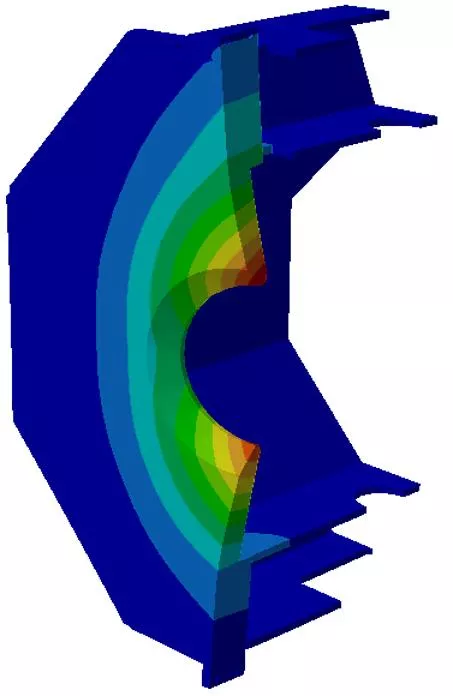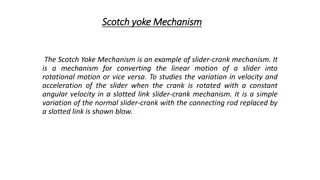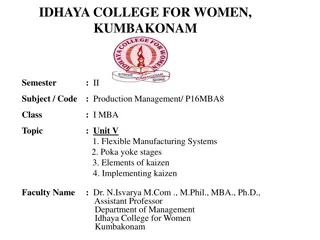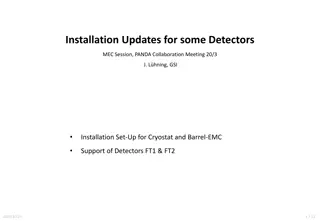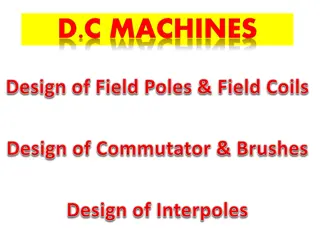Solenoid Yoke
In a complex solenoid yoke barrel connection, assessing the deflection of the door is crucial. With specific bolt sizes and spring constants, as well as magnetic forces affecting the door, precise calculations are required to maintain stability. The design intricacies and challenges of supporting the door within the assembly are highlighted, emphasizing the need for meticulous precision. Various components like bolts, nuts, shims, and bearings play essential roles in ensuring structural integrity and minimizing deflection under different forces.
Download Presentation

Please find below an Image/Link to download the presentation.
The content on the website is provided AS IS for your information and personal use only. It may not be sold, licensed, or shared on other websites without obtaining consent from the author.If you encounter any issues during the download, it is possible that the publisher has removed the file from their server.
You are allowed to download the files provided on this website for personal or commercial use, subject to the condition that they are used lawfully. All files are the property of their respective owners.
The content on the website is provided AS IS for your information and personal use only. It may not be sold, licensed, or shared on other websites without obtaining consent from the author.
E N D
Presentation Transcript
Solenoid Yoke Door-Barrel Connection Estimate about the deflection of the southern (upstream) door: The upstream door halves will be fixed to the barrel yoke by 16 bolts of size M36. The barrel sides of these connections are hard to access, therefore any nut on that side should be in place and fixed before. Max. axial deflection 0.7mm How long should the bolts be? The axial spring constant of a M36 bolt of 360 mm length is about 500 MN/m (Young s modulus cross section / length) . The spring constant of the nut housing is about the same. The magnetic force on the upstream door in the region where it is in contact with the barrel is in the order of 1.6 MN (160 tons). In the inner region (0.6m<R<1.5m) the force is about 0.9 MN. The axial deflection under magnetic forces is about 0.7 mm. Luehning, 2017-10-04
Door-Barrel Connection The design of the door supports presented by the Dubna group is explained in chapter 4.2.3 of the solenoid-specs (https://edms.cern.ch/document/1713314/6). upstream door The area around the supports is very crowded, it is not easy to get access to parts like screws and shims. Is a solution without access possible? The support surfaces of the door and the barrel beam will not be exactly parallel. In order to keep stresses low the shims have to be precisely machined so that any deviation from parallelism is compensated. An alternative to flat, precisely machined shims are ball shims, see for instance barrel beam http://www.maedler.de/product/1643/2593/2605/kugel ausgleichsscheiben-mn-6865-rostfrei Luehning, 2017-10-04
Door-Barrel Connection When the Target Spectrometer (solenoid) will be moved almost the whole weight of the door halves (2 23 tons upstream) will rest on only 2 bearings at the barrel. Vertical support of upstream door (turquoise) at barrel beam (blue), with ball shim (yellow) Same as left-hand, door hidden Vertical deflection values [mm], deflection magnification factor 1000 Luehning, 2017-10-04
Door-Door Connection Upstream The cam rolls on top of the door halves should be nearer to the vertical centre-of-gravity (c-o-g) axis of each door half. The maximum force in beam direction that the cam rolls have to bear is expected to be 10kN. The vertical c-o-g axis (blue) of each door half is at about Cam rolls should be nearer to the c-o-g axis (~16cm) These blocks need to be thicker (120mm instead of 60mm) x=110cm ( ) Luehning, 2017-10-04
Door-Door Connection Upstream The cam rolls on top of the door halves should be nearer to the vertical centre-of-gravity (c-o-g) axis. The maximum force in beam direction that the cam rolls have to bear is expected to be 10kN. Cam rolls ~16cm nearer to the c-o-g axis These blocks need to be thicker (120mm instead of 60mm). The minimum force applied on the connection screws is 40kN. Luehning, 2017-10-04
Downstream Door Aperture in last plate Once there was a reason why the aperture in the last plate of the downstream door had to be much bigger than the apertures in the previous plates. This reason does not exist anymore. Now, for the last plate, it is sufficient to provide an aperture with a width of 520mm and a height of 260mm. Luehning, 2017-10-04
Downstream Door Screws and spacers In order not to waste space for the Muon Counters: Should the spacers between the door plates be placed nearer to the fixing screws (yellow, see below)? A more favourable place for squeeze-off screws (magenta) is next to the fixing screws, horizontally. Length of the fixing screws: Mounted through all plates requires a length of 540mm, maximum standard length for M36 with bolt head is 360mm. The current set-up of plates, fixing screws, and nut holders is very elastic. To make it more rigid there should be provided spacers between the plates next to the screw holes, and the screws should be shorter. The assembly force each M36 screw can exert on the door- barrel connection is about 20 kN (2 tons, wrench torque 250 N m assumed). A higher force might be problematic for the nut holders. 20 kN per screw is not enough to prevent vertical sliding of the doors (by static friction). Holes for fixing the spacers between plates (by spot-welding) Luehning, 2017-10-04
Add-on Beams on Upper Frame Beam Diagonal beams debatable, one instead of 4 seems to be sufficient Maximum force to be expected in this direction: 12 kN Maximum momentum (about x-axis) on a single beam : 10 kN m Maximum horizontal force to be expected on door rail: 10 kN Luehning, 2017-10-04
Big Support Beam In the southern support beam 2 holes with 200mm diameter are needed. Rips on this side might be omitted. Luehning, 2017-10-04
